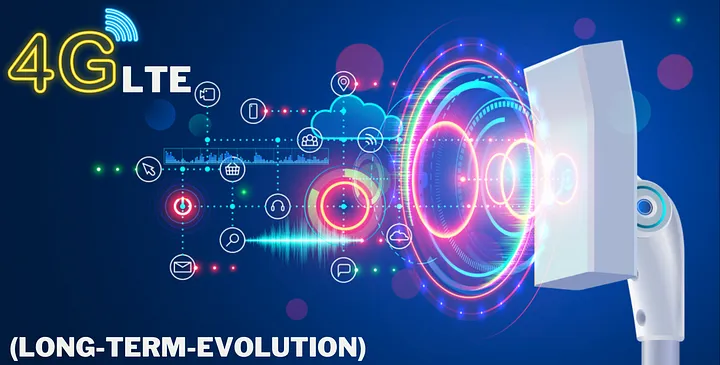Welcome to our series of articles on Emergency Response in Hospitality, where we explore the critical aspects of managing emergencies in the hospitality industry. Whether you are a hotel manager, a restaurant owner, or a hospitality professional, understanding and implementing effective emergency response procedures is paramount to ensure the safety and well-being of your guests and staff.
In this introductory article, we will address some fundamental questions to provide a comprehensive overview of Emergency Response in Hospitality. By the end, you will have a clear understanding of the importance of local LTE (Long-Term Evolution) technology in enhancing emergency response capabilities within the industry.
- What is Emergency Response in Hospitality?
Emergency Response in Hospitality refers to the set of protocols, systems, and strategies designed to manage and mitigate emergencies that may arise in hospitality establishments. These emergencies can range from fires, natural disasters, medical emergencies, security threats, and more. Having a well-defined emergency response plan ensures the safety of guests and staff while minimizing potential damage to property and reputation.
- How does Emergency Response in Hospitality apply to local LTE?
Local LTE plays a vital role in enhancing emergency response capabilities in the hospitality industry. By leveraging LTE technology, establishments can establish a private LTE network to ensure seamless communication and coordination during emergencies. This network enables real-time information sharing, emergency alerts, and efficient communication between response teams, management, and relevant authorities.
- What are the roles of local LTE in Emergency Response in Hospitality?
Local LTE empowers hospitality establishments to establish their own private network, enabling a range of critical functions during emergencies, including:
- Rapid and reliable communication among emergency response teams, staff, and management.
- Real-time monitoring and sharing of emergency information, such as evacuation plans, safety protocols, and medical assistance requirements.
- Seamless coordination with external agencies, such as emergency services, law enforcement, and medical professionals.
- Efficient deployment of resources, such as first aid equipment, evacuation routes, and emergency personnel, based on real-time situational awareness.
- What is the mechanism behind local LTE in Emergency Response?
Local LTE networks utilize advanced wireless communication technologies to provide reliable, high-speed connectivity within the hospitality establishment. These networks are built using LTE infrastructure and may utilize small cells, distributed antenna systems (DAS), or other network components to ensure comprehensive coverage throughout the premises. By establishing a private LTE network, hospitality establishments can have greater control over their communication infrastructure, enabling faster response times and improved emergency management.
- Why do hospitality establishments require local LTE for emergency response?
Local LTE technology offers several key advantages for emergency response in hospitality, including:
- Reliable and dedicated network: Establishing a private LTE network ensures that communication channels remain operational even during network congestion or outages, providing a reliable means of communication during critical situations.
- Faster response times: With local LTE, emergency alerts, notifications, and updates can be disseminated quickly and efficiently to relevant parties, enabling swift response and action.
- Improved situational awareness: Local LTE enables real-time sharing of information, including video feeds from security cameras, live updates on emergency situations, and location tracking of staff and guests, allowing for better situational awareness and decision-making.
- Enhanced coordination: By facilitating seamless communication and collaboration among response teams, local LTE improves coordination efforts during emergencies, leading to more effective and efficient response actions.
- How does local LTE support real-time communication during emergencies?
Local LTE networks provide robust and high-speed communication capabilities, allowing for real-time voice and data transmission. This enables emergency response teams, staff members, and management to stay connected and exchange critical information instantly, facilitating coordinated emergency response efforts.
- Can local LTE improve guest and staff safety during emergencies?
Absolutely. Local LTE can significantly enhance guest and staff safety in emergency situations by:
- Enabling quick and efficient communication of evacuation orders, safety instructions, and emergency protocols to all occupants of the establishment.
- Facilitating communication between guests and emergency personnel, allowing for immediate assistance and guidance.
- Assisting in the tracking and locating of individuals during evacuations, ensuring that no one is left behind or unaccounted for.
- How does local LTE support emergency services integration?
Local LTE networks can seamlessly integrate with external emergency services, such as fire departments, paramedics, and law enforcement agencies. This integration allows for streamlined communication and coordination between the hospitality establishment and these external agencies, ensuring a synchronized and efficient response to emergencies.
- Can local LTE assist in managing medical emergencies?
Yes, local LTE can play a crucial role in managing medical emergencies within hospitality establishments by:
- Enabling rapid communication between on-site medical personnel and external healthcare providers, facilitating the exchange of vital patient information and medical advice.
- Supporting real-time tracking and monitoring of medical equipment and supplies, ensuring their availability during emergencies.
- Providing access to telemedicine services, allowing for remote medical consultations and assistance when immediate physical presence is not possible.
In conclusion, Emergency Response in Hospitality is a critical aspect of ensuring the safety and well-being of guests and staff in hospitality establishments. By implementing effective emergency response procedures and leveraging local LTE technology, establishments can significantly enhance their emergency management capabilities. Local LTE provides reliable and dedicated network connectivity, enabling rapid communication, improved situational awareness, and seamless coordination with emergency services. It empowers establishments to communicate real-time emergency information, track individuals during evacuations, and integrate with external agencies for a synchronized response. By delving deeper into this series of articles, we aim to equip hospitality professionals with the knowledge and tools necessary to enhance safety and emergency management within their establishments. Stay tuned for upcoming articles that will explore topics such as emergency response planning, network infrastructure, and communication systems, to further strengthen your understanding of Emergency Response in Hospitality.




